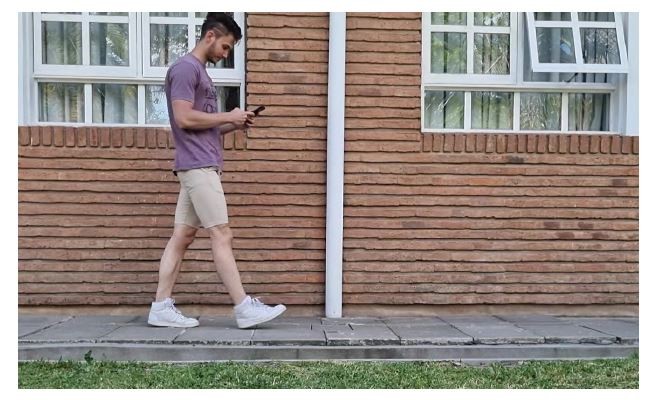Martín Suárez, María Casablanca, Melisa Frisoli, Pablo Luciano Querubín Pereyra, Juan Grigolatto, Daniel Zapata, Paola Catalfamo Formento
Publicado: Junio, 2025
Abstract
Introduction. Smartphones have become essential tools in daily life. Research has shown that some spatio-temporal parameters of gait are affected when using smartphones. However, most of the research has been conducted indoors, in controlled environments.
Objective. To study the impact of smartphone use on gait spatio-temporal parameters and symmetry in young adults walking outdoors.
Method. Videos of 35 healthy young adults (14 women, aged 18–28 years) were recorded in an outdoor pathway under two walking conditions: habitual walking and
walking while texting on a smartphone using both hands. The videos were analyzed to calculate spatio-temporal parameters and symmetry.
Results. The results showed that during walking while texting, participants walked at a lower speed (P < 0.0001), with a longer cycle time (P < 0.0001), step time (P < 0.0001), and stance time (P < 0.0001) compared to habitual walking. However, the symmetry between lower limbs showed no differences for any of the analyzed parameters (P > 0.05).
Conclusion. Smartphone use while walking affects gait spatio-temporal parameters, leading to reduced walking speed and adjusted temporal variables. However, gait symmetry between lower limbs is preserved. These changes might aim to enhance stability and balance, improving pedestrian safety under divided attention.

least six randomly generated numbers.
Keywords
- Videography
- Walking speed
- Stance time
- Swing time
- Dual-task
- Texting while walking
